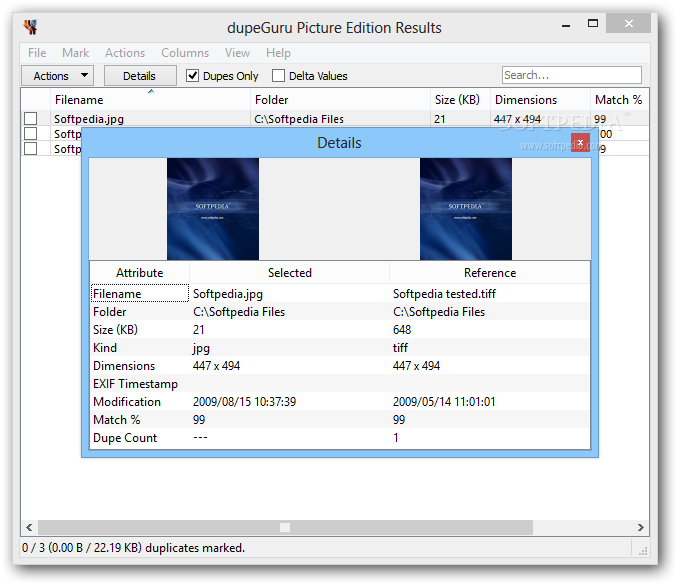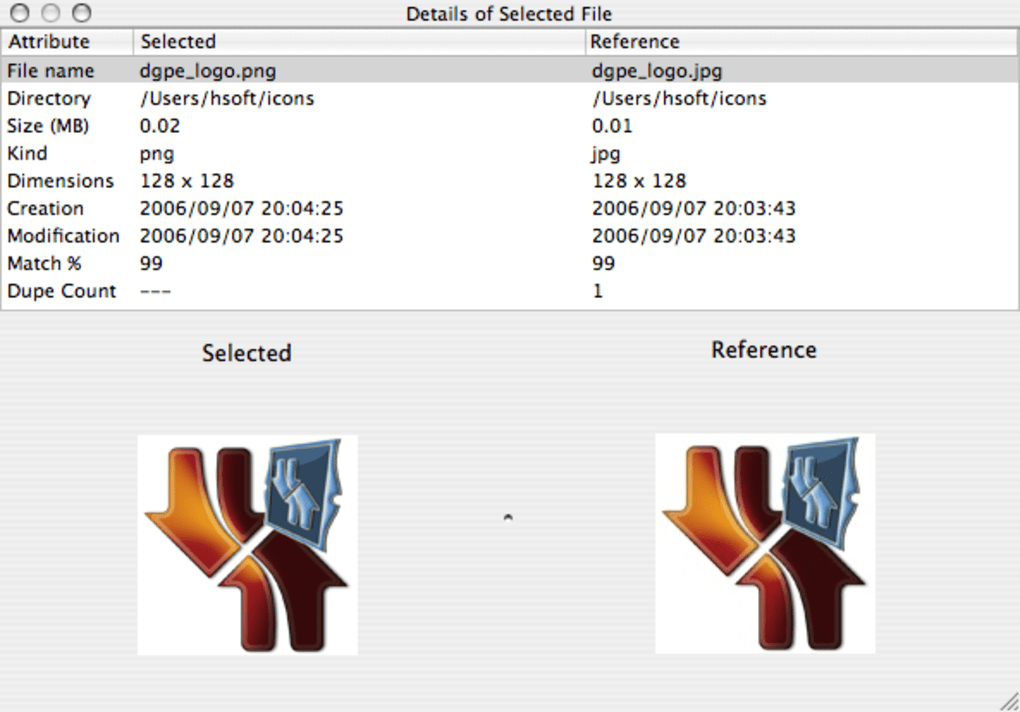
I thought it would be faster using it from my nas since the scanning for dupes i wanted to do is locally on the nas, thats why i bothered to setup dupeguru on the nas rather than desktop pc, because i assumed that perhaps the scanning can go faster that way since it's doing it internally on the nas
#Dupeguru picture tutorial Pc#
The alternative is, to rune dupeguru on a desktop pc, then you can select location without going through that hassle but then the cpu and ram resource it uses would be from your desktop pc instead. You can't just simply add locations which the container station does not have a mounted source location, especially one you did not set during the first setup in container station. So any future scans can only be done from sources that you initially added during your initial dupeguru setup. You just change the location to your own. If you read here, the videos part is the source of where my dupeguru can do it's scanning. In container station if i'm not mistaken, you need to make your share a mountable source point? I click the '+' sign to add a volume but I'm only seeing the local dupeguru linux container file structure. I got dupeguru running in the container, but how do you mount or point it to the NAS shares for scanning? Dupeguru just helps you check just in case.

So using dupeguru you can then find duplicates, and delete them and save yourself wasted space on your NAS, because you sloppily added duplicates onto your NAS storage.
#Dupeguru picture tutorial install#
just install the dupeguru windows app on your windows 10 pc, and run from there, and point it to your nas). It's way faster than having dupeguru run from PC, and scanning your NAS (you can do it that way if you prefer. I can now at least run the scan direct on the QNAP. There are probably a few other things that can be changed in container station settings, but this is as much as i've figured out own my own so far. also there might be a good reason why there is a dupe file to begin with, so you have to check it out and figure that out). You can then manually check if it really is a dupe (which i recommend. It will begin scanning, and if it detects duplicates it will tell you, by having dupes set beside each other in a row. Then you can use the modes for scanning, e.g. an additional step i did was to select the snapshots folder, and exclude that (no point scanning snapshots). in dupeguru click the + then add the share locations you wish to scan. a new browser tab opens for your dupeguru app now running the QNAP.ĥ. Go to container station overview, your app should be running.

If your share folder is using encryption, is has to be unlocked or the container dupeguru app cannot start fyi.Ĥ. So the volume hosts you created, make sure it uses the same mount point created for it as well. You also have to add a mount point for it. You can to go to volume hosts, and add the locations from your NAS you wish for dupeguru to scan from.

The first to do, is go to the shared folders. You do this by clicking the advance settings. however, begin to edit the settings for this, before finalizing creating the new containerized app. then in images, select the dupeguru app, then click create a container.


 0 kommentar(er)
0 kommentar(er)
